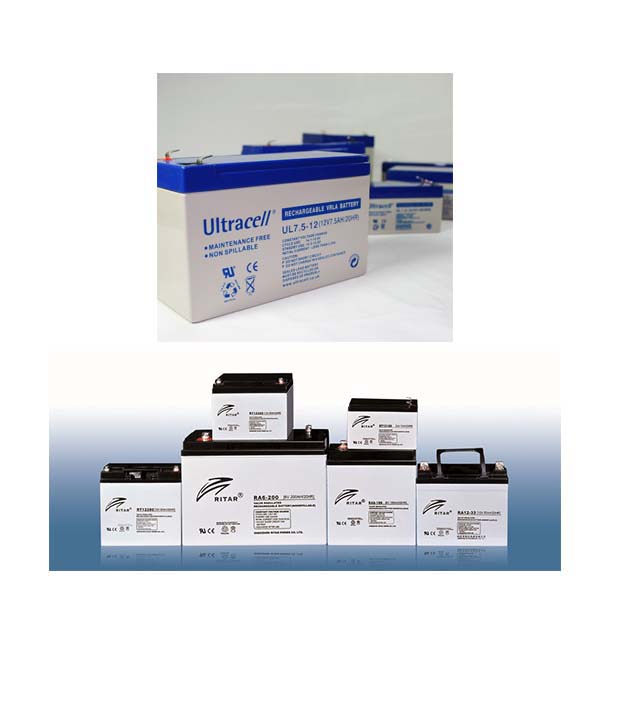VRLA Batteries
VRLA batteries are environmentally friendly and safer than earlier open-vented types. This is because modern VRLA batteries are around 98% recyclable, with well-developed recycling infrastructure in most developed countries such as the reputable, trusted partners NEWAVE Uninterruptible Power works with.
Unlike earlier open vented cells that needed regular topping up, today’s batteries are sealed units that require no user maintenance. A valve allows venting of gases generated in emergency/over-pressure situations, though the amount given off is so small that it can normally be handled by standard air handling equipment used to control temperature. On this point it is important to note that as a device based on temperature dependent chemical reactions, batteries require a temperature-controlled environment. The best balance between operating performance and lifetime is achieved at 20degrees C. As a rule of thumb, for every 10 degrees C above this the working life will halve. The useful working life of the battery is also affected by how the battery is used, so great care must be taken when selecting and sizing batteries for a UPS installation.
VRLA batteries can be housed in cabinets alongside the UPSs rather than in separate battery rooms, even if the UPSs are operating within an office environment. However, because the combined voltage of the battery system will be the same as a mains electricity supply, for safety reasons it should be protected from unauthorized or accidental contact.
All batteries should be regularly checked, or a fixed battery monitoring system should be used. Eventually, they will require replacement, however, this life can be maximized by taking care to operate within a well-managed environment and setting up a regular maintenance schedule. A battery management system that balances charging between battery “blocks” can also be added, potentially increased lifetime by up to 30%.
VRLA batteries are made up in blocks; a battery block is a number of cells connected together with a given voltage and capacity, where. the capacity is defined in terms of Ampere hours (Ah). The more cells the higher the battery voltage and the larger the plates the higher the battery capacity.
Batteries are generally made in 12-volt blocks using six cells but are also available in 6-volt (three cell), 4-volt (two cell) and 2-volt (single cell) blocks. In the battery configuration, all the cells used in a serial string must be identical to each other.
Disposal/Recycling
When a battery has reached the end of its useful working life it must be returned to the point of sale or to a licensed battery dealer for recycling. ‘Old’ batteries are classified as ‘hazardous waste’ and must be disposed of in line with current legislation. NEWAVE Uninterruptible Power can assist with the disposing/recycling of VRLA batteries.
